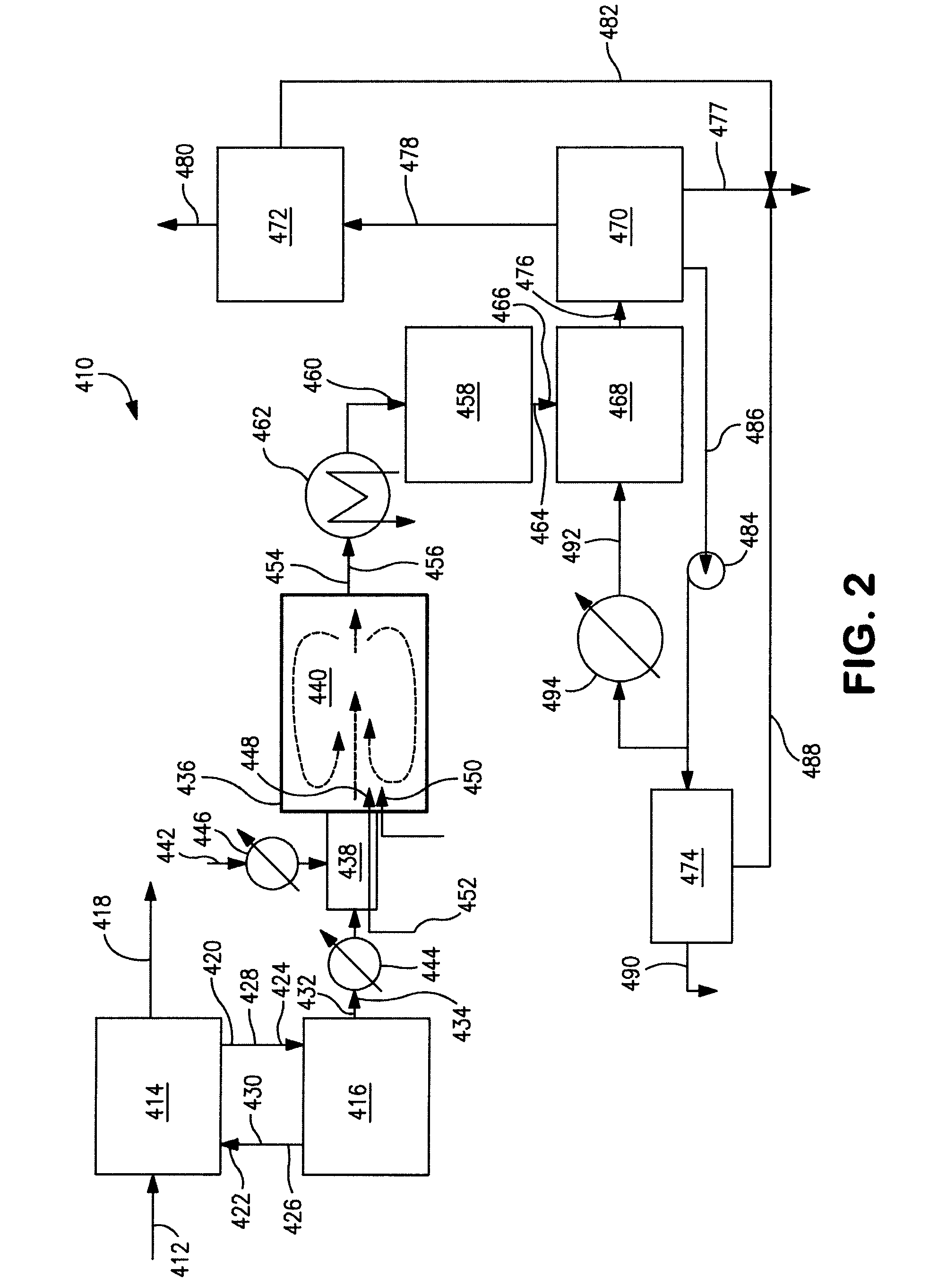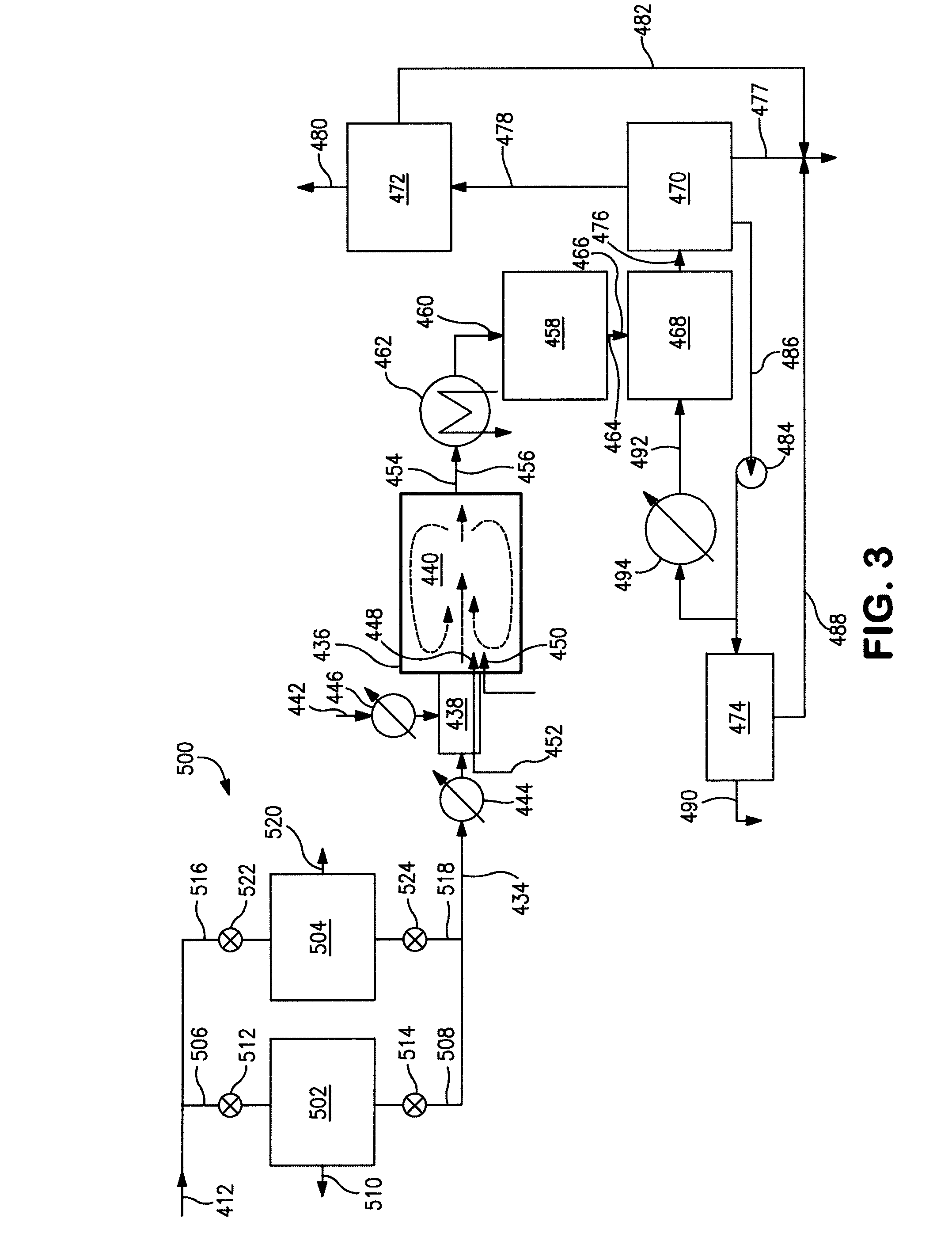Conversion of hydrogen bromide to elemental bromine
a technology of hydrogen bromide and elemental bromine, which is applied in the direction of bromine, organic chemistry, chemistry apparatus and processes, etc., can solve the problem that the byproduct of hydrogen bromide is not environmentally compatibl
- Summary
- Abstract
- Description
- Claims
- Application Information
AI Technical Summary
Problems solved by technology
Method used
Image
Examples
example 1
[0122]A quartz tube having a 1 inch ID (21 mm) and is 46 inches in length (1168 mm) is employed as a reactor in the present example. The first half of the tube length is a packed section containing a packing of ¼-inch (6.4 mm) ceramic Berl saddles. The remaining half of the tube length is open. The tube is placed in an electric furnace having two heated zones. Each heated zone is 12 inches (305 mm) in length. The packed section of the tube is positioned within the first heated zone and has a void volume of approximately 55 cm3. The open section of the tube is positioned within the second heated zone and has a volume of approximately 105 cm3.
[0123]A series of thermal test runs, T-1 through T-7, are performed in the reactor, each test run having a different set of operating parameters. In each thermal test run, excess air and gaseous hydrogen bromide are fed to the packed section of the tube at a desired feed rate. An initial length of the packed section functions as a reactant mixing...
example 2
[0128]A series of additional thermal test runs, T-7 through T-10, are performed in the same apparatus and using the same analytical methods as Example 1. However, the focus of the present example is to determine the effect that varying the amount of excess air over stoichiometric has on hydrogen bromide conversion in the thermal oxidation reactor zone. In addition, the feed gas throughput in test run T-10 is reduced to determine the effect of increased reactant residence time in the thermal oxidation reactor zone at high excess air on hydrogen bromide conversion.
[0129]The operating parameters and results of the additional test runs are set forth below in Table 2. The results of test runs T-2 and T-7 are also repeated from Table 1 for comparison.
TABLE 2ReactorHBrExcessRes.HBrAirTemp.Conv.AirTimeFeedFeedRun° C.%%seccm3 / mincm3 / minT-299585183.3294412T-799782183.3294412T-899679123.3309412T-999890443.0285489T-1099892494.8178316
[0130]FIG. 6 is a graphical depiction showing the effect of th...
example 3
[0131]The packing of the quartz tube of Examples 1 and 2 is modified by filling the entire first heated zone of the tube with ceramic Berl saddles having the same characteristics as Examples 1 and 2. The first 5 inches (127 mm) of the second heated zone of the tube is packed with 50 cm3 of catalyst and the remaining 7 inches (178 mm) of the second heated zone are filled with the ceramic Berl saddles. As such, the quartz tube simulates the function of the catalytic reactor 458 as shown in FIGS. 2 and 3.
[0132]A series of catalytic test runs, C-1 through C-4, are performed in the apparatus using the same analytical methods as above to determine the effect that catalysts, operating within a lower range of temperatures, have on hydrogen bromide oxidation. The operating parameters and results of the catalytic test runs are set forth below in Table 3.
TABLE 3ReactorHBrExcessGHSVHBr FeedAir FeedTemp.Conv.Airat STPat STPat STPRunCatalyst° C.%%hr−1cm3 / mincm3 / minC-1NiO / alumina55098.531105030077...
PUM
| Property | Measurement | Unit |
|---|---|---|
| temperature | aaaaa | aaaaa |
| temperature | aaaaa | aaaaa |
| pressure | aaaaa | aaaaa |
Abstract
Description
Claims
Application Information
 Login to View More
Login to View More - R&D
- Intellectual Property
- Life Sciences
- Materials
- Tech Scout
- Unparalleled Data Quality
- Higher Quality Content
- 60% Fewer Hallucinations
Browse by: Latest US Patents, China's latest patents, Technical Efficacy Thesaurus, Application Domain, Technology Topic, Popular Technical Reports.
© 2025 PatSnap. All rights reserved.Legal|Privacy policy|Modern Slavery Act Transparency Statement|Sitemap|About US| Contact US: help@patsnap.com



